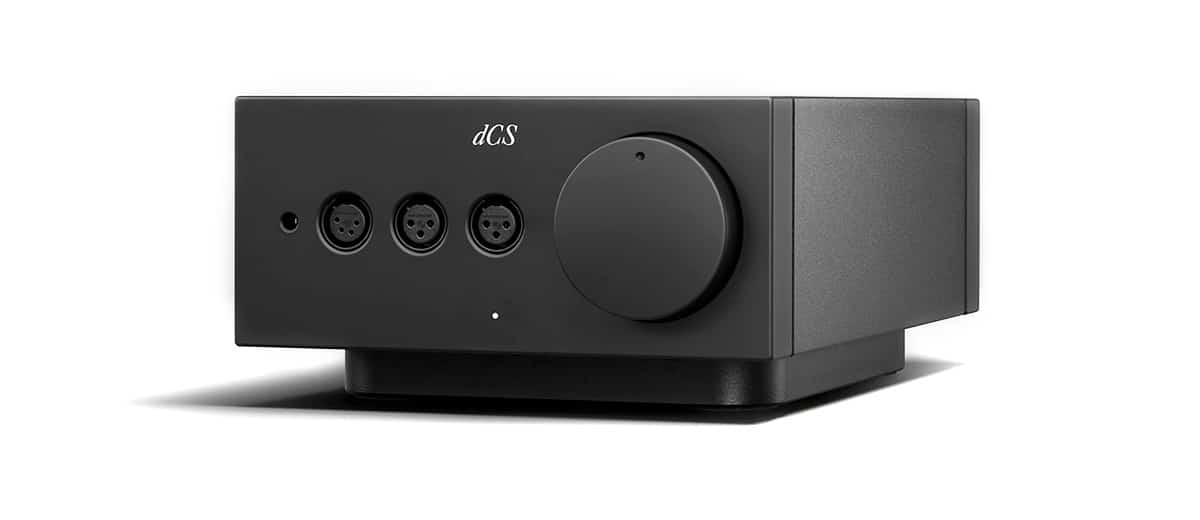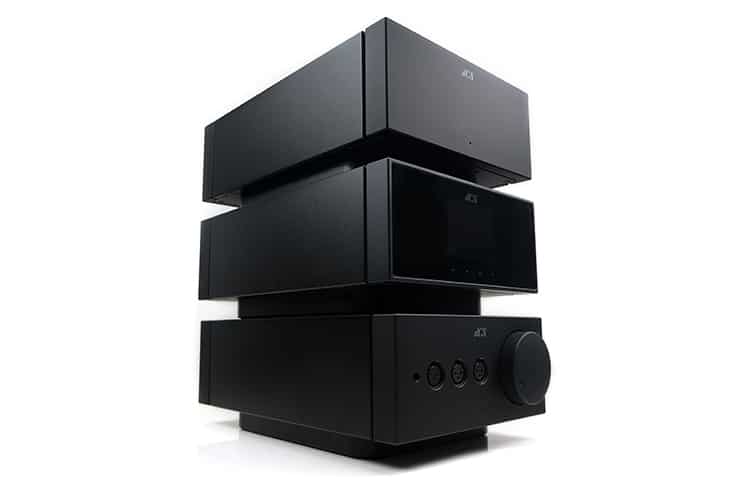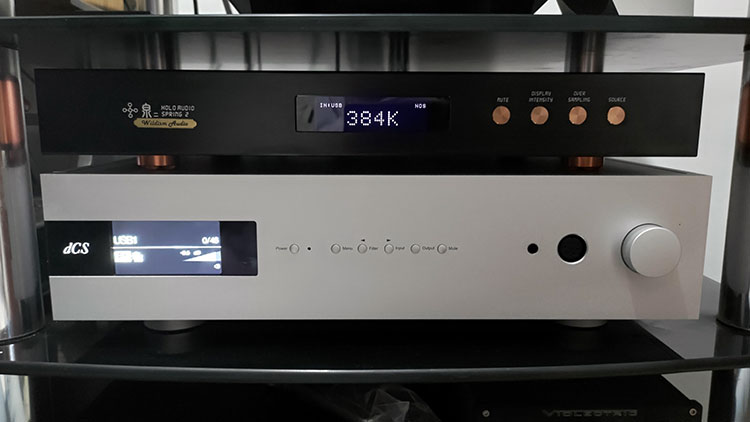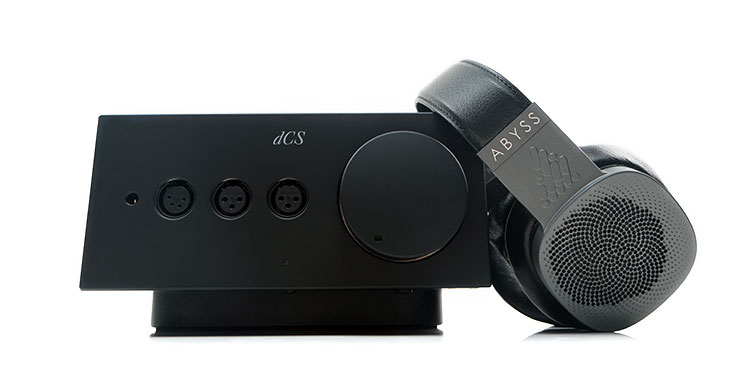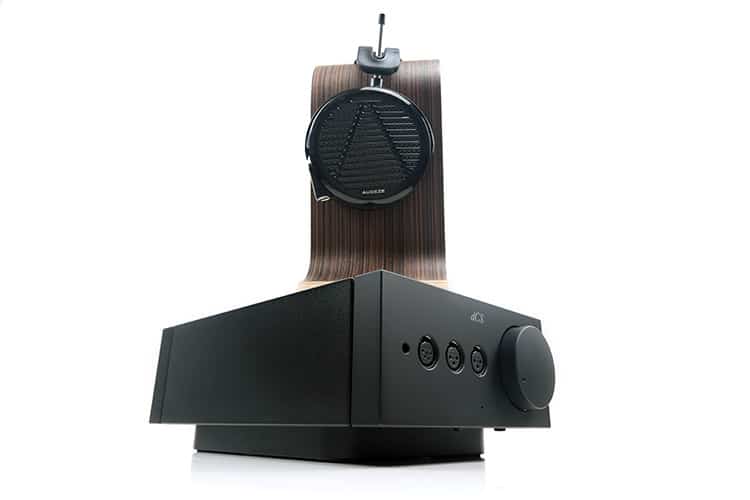Sound Impressions
All impressions were completed using the dCS Lina DAC and Master Clock with a selection of headphones including the Abyss Headphones Diana TC, HIFIMAN’s Susvara, the Audeze LCD-5, and the T+A Solitaire P.
Summary
The dCS Lina headphone amplifier is an inherently neutral-sounding but energetic performer able to perfectly capture an outstanding level of resolution from both siblings, the DAC, and the Master clock.
It also has a world-class level of transparency allowing you to pick up nuanced changes from source swaps or even just from turning the Clock on and off. That transparency, in turn, is delivered with superb levels of dynamic range and in a manner that will allow almost any headphone to remain true to its own tuning.
It is different from the Bartok, very different. In part that comes from the increased current limit and better balancing with its voltage potential for demanding planar headphones such as the Susvara.
The other factor is simply the tuning with its differing emphasis and Class AB heritage. It is punchier, more dynamic sounding, and perhaps slightly more upfront and vivid through the mids and highs.
The sub-bass performance with difficult-to-please headphones such as the Dan Clark Audio Stealth was mesmerizing and a night and day difference from the likes of the Chord Electronics Hugo TT2 which felt almost cut-off sub-100Hz.
The staging depth is breathtaking at times but not just a two-dimensional balance between depth and highs but also behind and around the vocalist at the same time.
I say this in regard to the Master Clock in particular which fleshed out the detail, separation, and layering just beautifully adding some very high levels of complexity that the Lina headphone amplifier picked up on right away. If you have a headphone known for speed and articulation the Lina amplifier, (with DAC and Clock), will give you some very rewarding results.
Timbre
No doubt the coloration of the Lina amplifier is decidedly neutral with a familiar level of solid-state energy, particularly on the lows where the fundamental can be very strong and punchy when called upon.
However, it’s not neutral to bright unless you are using a bright headphone or source, to begin with. It is a more revealing amplifier than the Bartok in a way and lacks an overt coloration to disguise the quality of your music but at the same time, it does respond beautifully well to bring out the color of your source if so required.
For example, with the Lina DAC and Master Clock, this is a vivid tonal quality, very accurate with an impressively accurate harmonic balance. There is just enough treble to keep percussion energy in your mind without tipping it into sibilance or splashiness and plenty of ‘reach’ down below to add authority to instruments when required.
Alternatively, with something like the Holo Audio Spring 2 Wildism R2R DAC behind it’s a more relaxed-sounding affair with a juicer vocal delivery but slightly less bass punch and depth to go along with it.
The decay, on the whole, is slightly shorter than the Bartok setup and that was coming from a test with both amps powered by the Bartok DAC. What that does for me is to enhance the perception of clarity and space or simply an excellent level of note control therein.
The Lina amplifier does lack a little of that familiar warmth from the Bartok tuning which offers a denser or richer sounding low-end. This is a more reference delivery to my ear with a more precise or detail-orientated approach to its performance. When called upon though, the dynamics of the bass Lina sub-bass delivery can often sound more dramatic.
Technical
Often the perception of good dynamic range will come from just how well the amplifier drives a headphone good enough to reproduce it.
Again, going back to the Susvara I never felt at any time there was a dynamic range gap between amplifiers that have stronger output power on paper such as the brilliant Feliks Audio Envy.
At the same time, with headphones such as the Abyss Diana TC, this was one of those rare combinations that sounded equally as involving at lower volumes. I sometimes tend to push up the volume to create a stronger sense of immersion but not this time. I didn’t miss a single bit of minute detail with pairings such as this.
Now as for the staging ‘form’, I would call this one somewhat neutral in imaging though contextually it feels more forward and lively compared to the Bartok amplifier’s own staging properties, even when sharing the same DAC.
Doubly so with the Master Clock which lifts the whole system into almost ‘God Tier’ for articulating detail in such a complex and layered manner. Performances like this make me want to try systems like the Rossini even more if only the wallet would allow it.
I did say somewhat neutral because for me the low-end can sound righteously bombastic below the mid-bass punch when called upon and paired with headphones that are capable of picking up on that.
I should caution that this is not a dense fulsome low-end like the Envy or the Bartok but the extension and clarity below 80Hz on most headphones were more impressive for me. If you have a headphone with a quality transient response performance the Lina amplifier is the perfect match for this type of sub-bass dynamic.
Synergy
Much has been or will be made of the synergy between the different Lina components, not least the DAC and amplifier combined with the Master Clock pairing. However, given the price point and the fact you can buy them separately, it is not a given someone who will buy the amp will also buy the matching DAC.
So, how then does the amplifier perform with 3rd party pairings which by default will use the unbuffered higher impedance input? I tested three including the R2R Holo Audio Spring 2 Wildism Edition and dCS’s own Bartok 2.0 Ring DAC using a 6V output, (unbuffered), just to get a flavor of what each could bring to the Lina amplifier.
Lina DAC or Bartok DAC?
For this test, we used the LCD-5 as our main headgear. The differences are there though sometimes subtle rather than stark given both are drawn from the same Ring DAC architecture.
The Bartok DAC brings a slightly smoother flavor to the Lina amp compared to the Lina Dac. You hear it in percussion splashes as well as the overall bass density from the LCD-5. The Bartok carries a bit more warmth and softens the note’s leading edges giving it a very natural tone with a longer decay.
The Lina DAC delivers a more precise high-energy neutral tone but a drier high-frequency tuning. With percussion hits lingering a little less it can create a perception of heightened clarity and more space though it lacks the warmth of the Bartok tuning. It does punch harder though and has a bit more ‘drive’ than its older sibling.
All that changes with the Master Clock turned on and I suspect this is where the Lina DAC as a source becomes the next level for me compared to using the Bartok DAC.
Everything becomes more vivid sounding and more holographic also, There is improved separation, especially on the bass layering and impact. Also, vocal imaging comes to the fore, much easier for the LCD-5 to pick out the spatial cues, especially if there is a vocal layering added to the audio track.
Better high-frequency reproduction seems adds to add a bit more sparkle and headroom from the LCD-5 as well. There is a slight dynamic range lift overall from the Lina DAC and Master clock combo compared to the Bartok DAC alone.
The R2R Effect
For the Holo Spring 2 Wildism test, I wanted to go with the DCA Stealth. There is something about this combo I love for vocals and I wanted to see how the Lina amp handled that with one of my favorite DACs behind it.
The Spring 2 delivers a slightly warmer and richer tone through the mids and highs and did very well indeed with the Lina amp in fleshing out some beautiful vocal texture and slightly longer levels of decay. It’s hard not to fall in love with that R2R sound if you are a vocal lover.
What it does lack though is that Lina DAC oomph right on the very low-end, more sub-to-mid bass than upper bass and lower mids where the Holo Audio pairing felt a bit fuller sounding.
Here the Stealth felt more authoritative, extending a bit deeper with the dual Lina pairing. The Stealth can be a picky headphone to get a tune out of the low-end, but I had no issues driving it with some good bass power from the Lina Amp.
Vocal imaging is not quite as forward sounding using the Holo Audio DAC especially if you have the dCS Master Clock turned on which makes it a very vivid source and amp combo. The Holo Audio is a little more neutral in its positioning whereas the Lina Amp/DAC combo has it pushed a little further forward when paired with the Stealth.
Noise Floor
For this, I went with an XLR to 2.5mm conversion plug to test sensitive IEMs for balanced and a straight 3.5mm to 6.35mm convertor for the SE output using the Lina DAC and Master Clock as the sources.
I had a bit of a mixed bag with IEMs in relation to an audible noise floor and background hiss. My starter IEMs, sensitive ones at that, including the Andromeda 2020 all displayed a higher level of background hiss than I would want and a general noise floor that delivered an audible audio signal even on low gain and the volume at its lowest setting.
Less sensitive IEMs such as the Odin, (3Ω 108dB SPL), and to some extent the VE Phonix, (13Ω 125dB SPL) all picked up on the higher noise floor though to a lesser extent than the Andromeda 2020, (12.8Ω 7.01 mVrms for 94dB @1kHz).
I had to double-check the Bartok review from a few years back because I had kicked this section off by saying it had an insanely low noise floor and yet the first few tests with the Lina and the Bartok didn’t back my previous claims up when comparing.
Cue, the 64 Audio U4SE, (12Ω 116dB SPL), which is the same as the one tested on the Bartok and the JH Audio Sharona, (16Ω 114dB SPL). Both IEMs delivered what I was hoping for which was very little background hiss and yes, a lower level of noise and better channel balancing compared to the Bartok at similar low volume levels.
I got even better results from the Audeze LCDi4 but that was to be expected given its planar design needs a stronger current and voltage supply than the aforementioned IEMs.
Power
Headphones are really where the Lina headphone amplifier excels and I include difficult-to-driver planar options in there.
One thing to note is if you are using the DAC and Master Clock combo then keep the Clock on. It made a palatable difference to the clarity and resolution of the performance with all of our tested headphones.
I have to use the Susvara for the test case here because there may be some confusion regarding that 2W 30Ω milestone. The Susvara is actually rated at 60Ω and 82dB SPL, it needs plenty of current and voltage but its marker is also right where the Lina headphone amplifier is optimal.
So, you get the full 4.5W potential of the amplifier with the Susvara, and oh my do you get plenty of headroom also with the dial going no higher than 11 am using the Lina DAC 6V output and the high gain setting on the amplifier itself.
I had to check also against a known strong contender for the Susvara, the Feliks Audio Envy which can deliver a milestone of 6W into 32Ω with excellent current and voltage headroom on its “hi” dial setting.
I could detect no dynamic range difference between the two amplifiers when using the Susvara with the only major differences coming down to the distinct tuning these amplifiers bring to the table.
Pairings
The clean, punchy, and energetic performance of the Lina Headphone amplifier works really well with headphones that can take advantage of that and keep up with the level of detail being thrown at you.
Keeping the Clock
Especially with the Lina DAC and Master clock behind it which just amplifies the clarity and articulation to a very high level. These two feel inseparable to me and hard to go back to just the DAC alone without it, almost like how I felt about the M Scaler when hooked up to the Hugo TT2.
For example, I much prefer the Lina setup with the Susvara when the Master Clock was deployed. It brings in some additional exuberance and vividness to the performance, especially in the mids where the Susvara can sound a bit relaxed and flat when switching the clock off.
The pairing also does an excellent job adding some depth to the staging, not on the low-end but more clarity behind the vocal and how the instruments are intricately layered and imaged.
Speed & Resolution
The Lina setup also makes the absolute best use of the Abyss Headphones Diana TC’s key strengths: speed and resolution. It stretches the staging out a bit wider for me compared to the Envy which is always a good thing for the Diana TC.
Vocal clarity and refinement are world-class also with a very black background and whilst not quite as weighty the dynamic range is marginally better than the Bartok using the Diana TC. Bass notes have an exquisite level of definition and sound incredibly articulate in their delivery.
Depth
The Lina’s Class AB ‘punch’ and depth also do very well with the DCA Stealth and the Audeze LCD-5, both of which have fairly neutral low ends. Especially the Stealth which can be tricky to drive.
I still feel an R2R DAC such as the Holo Audio Spring 2 is more natural for vocal reproduction but it doesn’t quite get the sub-bass as free-flowing and as powerful sounding as the Lina amplifier can when paired to the DAC and Clock.

